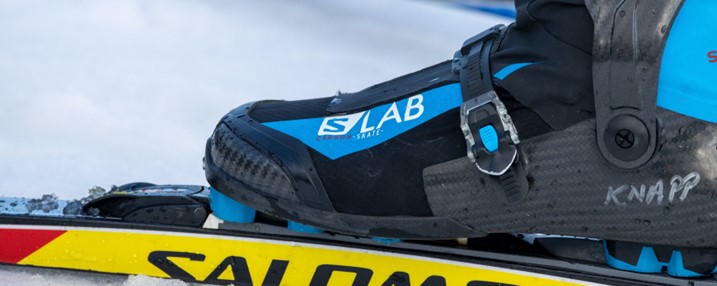There are many parameters to consider when choosing the most suitable pair of ski boots. One factor that is important but often overlooking is the weight of the boot. In this article, I’ll be discussing the average weight of ski boots and how it affects their feel and performance.
Average Ski Boot Weight
On average, a pair of men’s ski boots weigh between 1.7-2.0 kg/ 3.75-4.4 lbs. Typically, women’s ski boots are slightly lighter compared to men’s ski boots and a pair usually weighs between 1.6-1.8 kg/ 3.53-3.97 lbs.
| Type of Ski Boot | Weight (kg) |
| Light Women’s Ski Boots | 1.6 kg or less |
| Average Women’s/ Light Men’s Ski Boots | 1.7-1.8 kg |
| Heavy Women’s/ Average Men’s Ski Boots | 1.8-2.0 kg |
| Heavy Men’s Ski Boots | 2.0 kg or more |

Why are Ski Boots Heavy?
Ski boots are pretty heavy compared to other types of shoe. For example, a pair of men’s trainers usually weighs slightly less than 1kg, making ski boots almost twice as heavy by comparison.
The reason why ski boots are so heavy is because they have a more rigid and sturdy construction compared to other types of shoe.
Here’s what ski boots are made from:
- Moulded plastic shell which fits over the foot
- Toe and heel lugs (plastic or rubber) which allow you to attach the boot to the ski bindings
- Soft liner (usually fabric, foam or leather) which goes inside the plastic shell
- Cuff (upper shell) which has the straps and buckles
Most of the weight of a ski boot is compromised by the upper and lower shells which are made from thick plastic (polyurethane). This helps to protect your foot whilst skiing and makes it easier to turn because it provides rigidity.
Why Do Some Ski Boots Weigh More Than Others?
Different types of ski boots weigh more than others. Men’s boots are typically larger compared to women’s ski boots so usually weigh around 0.1-0.2 kg more. However, the type of the boot offers even more variation in weight.
The weight of a ski boot is also affected by the flex rating. Most brands use a scale of 50 to 130 to measure the relative stiffness of the boot. The lower the flex rating, the softer and more flexible the boot is. The higher the flex rating, the stiffer the boot is.
As a general rule, stiffer boots are more suitable for taller, heavier and more advanced skiers.
If you want to learn more about ski boot flex, check out this article.
The stiffer the boot is, the heavier it usually is as well. This is because the extra stiffness is created by having a thicker plastic shell and thinner liner. Hence, stiffer boots tend to feel slightly less comfortable compared to softer boots.
However, it is important to note that there are exceptions to this general rule. It is possible to get very stiff boots that are also lightweight by using different types of plastic for the lower shell. This is commonly seen in racing boots which are both stiff and lightweight.
Some ski boots also have a walk mode which can add a couple of extra hundred grams of weigh to the boot. Walk mode allows greater range of movement when walking so you’ll often see this feature on touring or cross-country ski boots. Check out this article I’ve written on ski boot walk mode to learn more.
Heavy vs Light Ski Boots
Most beginner and intermediate skiers are unlikely to notice much of a difference between ski boots which weigh 1.6 kg and 1.8 kg for example. Only switching from particularly heavy and light boots will be noticeable for skiers at this level.
However, more advanced skiers are likely to notice that 100-200 g difference between a pair of boots, so what difference does it actually make?
Heavier ski boots are better for going downhill because they will suffer less from deflections and will usually be stiffer which helps to increase their performance. Lighter ski boots are better for going uphill and also help to increase speed for racing.
Advantages of Heavy Ski Boots
- Usually stiffer so better for more aggressive skiers
- Less deflection when going downhill
Advantages of Light Ski Boots
- Usually softer so better for beginners
- Better for going uphill
Check out this article to learn more about the weight of other skiing equipment.
